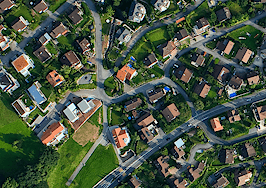- The start of 2018 is seeing a strong, unsatisfied demand for housing, and tight inventory in a robust and growing economy, according to realtor.com's "State of the Housing Union" report.
Preceding next week’s State of the Union address, the “State of the Housing Union” released today by realtor.com is characterized by strong buyer demand, tight inventory and frustrated millennials who have “hit the wall” on their homebuying aspirations due to lack of homes in their price range.
Strong demand and weak supply have “set the tone” for the industry, said realtor.com senior economist Joe Kirchner in the press announcement. The new tax law — which caps the mortgage interest deduction for primary and secondary residences at $750,000 and limits state and local tax deductions — is expected to impact the upper end of the market in 2018, according to Kirchner.
The outlook for the general economy is upbeat; buoyant consumer confidence is anchored by unemployment reaching historic lows and the current strength of the U.S. stock market, but projections for the housing market were less rosy with sales growth of existing homes cooling in 2017, rising 1.1 percent last year compared to 3.8 percent in 2016.
Hampered sales were of course the result of low inventory rather than a lack of demand. Inventory fell 8.8 percent nationally in 2017, compared with 10.7 percent the previous year despite solid increases in new construction of single-family homes over the past two years.
Kirchner told Inman that housing is experiencing an unusual period following the recession in which certain facets of the market are still in recovery. For instance, smaller building companies have not returned to the housing industry as expected, limiting the amount of new homes coming on stream.
“Builders will need to focus more on homes geared for moderate incomes, partner with the government on initiatives to transform distressed urban neighborhoods and overcome labor shortages through a combination of workforce development training and pressure to ease artificial restrictions on the supply of labor,” Kirchner said.
Kirchner told Inman that after the recession, builders felt burned from the number of foreclosures on affordable homes they had built on the outskirts of cities, and were devoting their resources post-recession to urban and inner city areas, where it’s more expensive to build and where developments take longer to get approved. He said that the amount of new-home construction is only one-third of the way to where it should be.
Realtor.com’s research also found that blue states such as California; Illinois; and the tri-state region of New York, New Jersey and Connecticut; saw stronger home price growth (9.1 percent) compared to its red state counterparts (5.9 percent).
Blue states, however will be facing some challenges down the line, largely due to tax reform. Last year 2.5 percent of all mortgages in blue states were more than $750,000 and will be “directly impacted” by the mortgage interest deduction cap.












